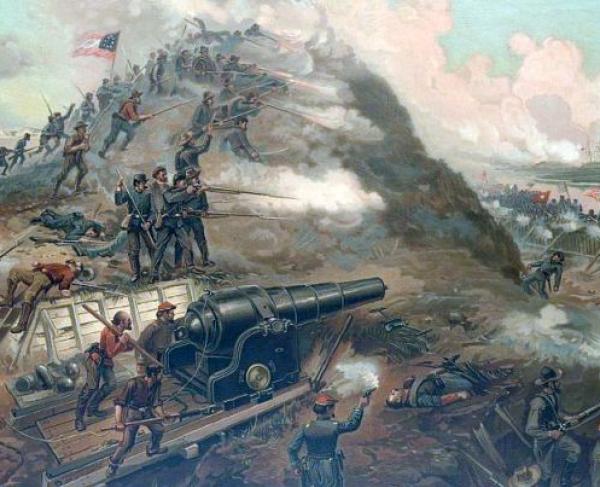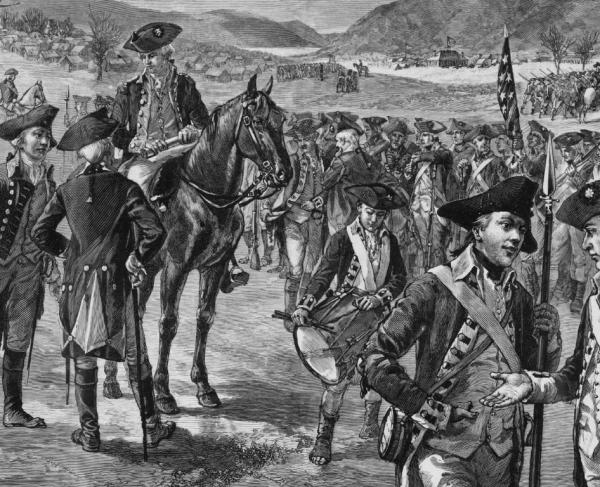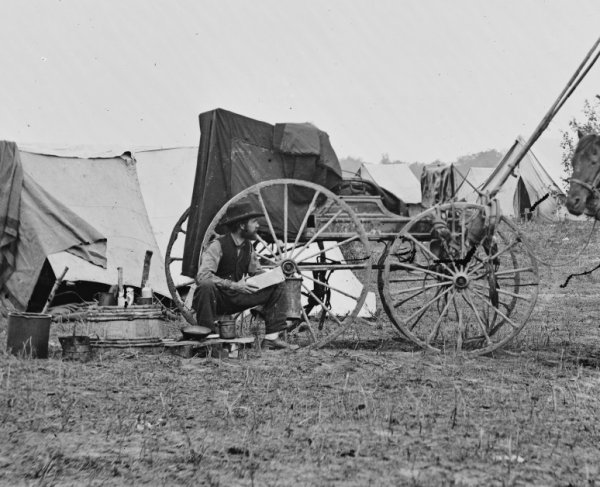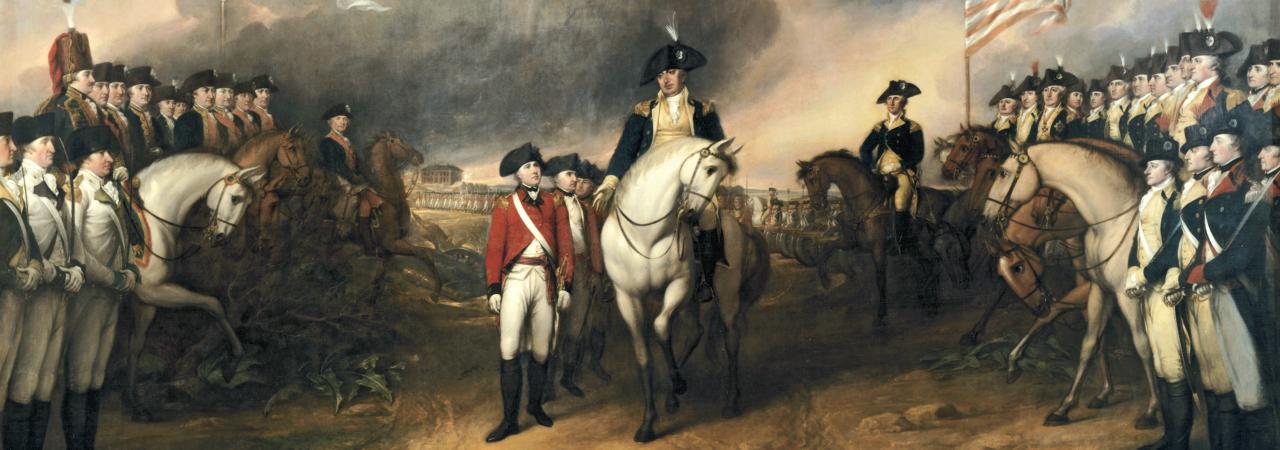
"The Surrender of Lord Cornwallis" is an oil painting by John Trumbull. The painting was completed in 1820, and hangs in the rotunda of the United States Capitol in Washington, D. C.
The Revolutionary War was a war unlike any other—one of ideas and ideals, that shaped “the course of human events.” With 165 principal engagements from 1775-1783, the Revolutionary War was the catalyst for American independence.
This article provides information on the American Revolution, also known as the American War for Independence or the Revolutionary War, including commonly asked questions. View the War of 1812 and Civil War facts.
- When did the American Revolution begin?
- When did the American Revolution end?
- What were the causes of the Revolution?
- What are patriots?
- What are loyalists?
- What were British soldiers called?
- What were the populations of the two sides?
- Where were the battles fought?
- How much territory did the British control during the war?
- What are the major battles of the Revolutionary War?
- What were the largest battles?
- Were there any sieges in the war?
- Were there any battles overseas?
- How many soldiers served in the war?
- How many were killed or wounded?
- What other nationalities were involved?
- Who were the Hessians?
- What role did African Americans and Native Americans play?
- How were the armies organized?
- What did the armies wear?
- What were a soldier’s rations?
- What tactics defined combat in the Revolutionary War?
- Was Valley Forge a turning point?
- What role did navies play?
- What kind of artillery was used?
- What role did cavalry play?
- What role did spies play?
- Where can I learn more?
- What is the preservation status of the Revolutionary War’s battlefields and sites?
When did the American Revolution begin?
Though preceded by years of unrest and periodic violence, the Revolutionary War began in earnest on April 19, 1775, with the battles of Lexington and Concord. The conflict lasted a total of seven years, with the major American victory at Yorktown, Virginia in 1781 marking the end of hostilities, although some fighting took place through the fall of 1783.
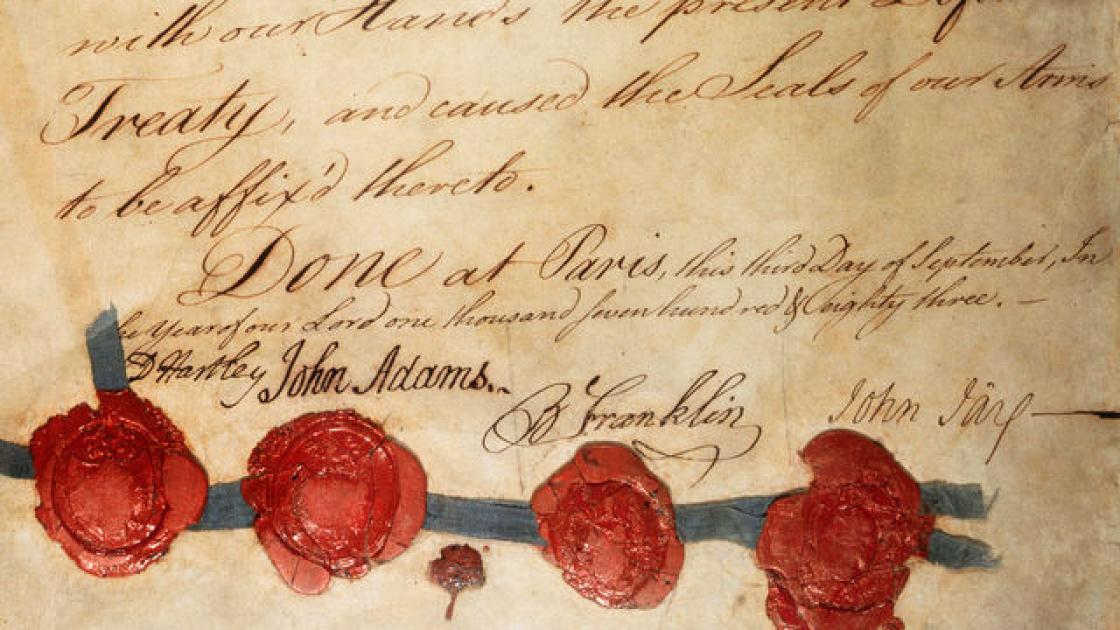
When did the American Revolution end?
The Treaty of Paris was signed two years later, on September 3rd, 1783, by representatives of King George III including David Hartley and Richard Oswald and the United States including Benjamin Franklin, John Adams, and John Jay, officially ending the conflict. The treaty was ratified by the US Congress of the Confederation on January 14th, 1784.
What were the causes of the Revolution?
Through aiding the American colonists during the French and Indian War, the British government amassed an enormous debt thanks to the cost of raising, supplying, and funding an army on foreign soil. Expecting the Americans to shoulder some of the financial burden, Parliament levied several acts of taxation as a means to soften the blow.
The Sugar Act (1764), the Stamp Act (1765), and the Townshend Acts (1767) were merely some of the unpopular pieces of legislation placed upon the American colonies for the purpose of raising funds to pay the French and Indian War debt.
Years of unrest and discord followed. The Americans maintained that Parliament could make laws, but insisted only their elected representatives could tax them. The English felt that Parliament had supreme authority over the colonies.
The Americans formed Committees of Correspondence, and later, a Continental Congress, to find solutions, but could not find common ground with the English. When fighting broke out in 1775, American revolutionaries determined that separation was the only means of obtaining liberty and justice.
The Declaration of Independence was signed on July 4th, 1776, formally dissolving the colonies' relationship with their mother country, and plunging the continent into war.
What are patriots?
The colonists living in the British North American colonies who rebelled against the authority of the crown were known as patriots, revolutionaries, continentals, colonials, rebels, Yankees, or Whigs.
What are loyalists?
Those who lived in the colonies and remained faithful to the Crown were known as loyalists, Royalists, King's Men, or Tories
What were British soldiers called?
British authority and soldiers likewise acquired several monikers throughout the course of the war and were synonymously referred to as the British, the Crown, Great Britain, lobster backs, and regulars.
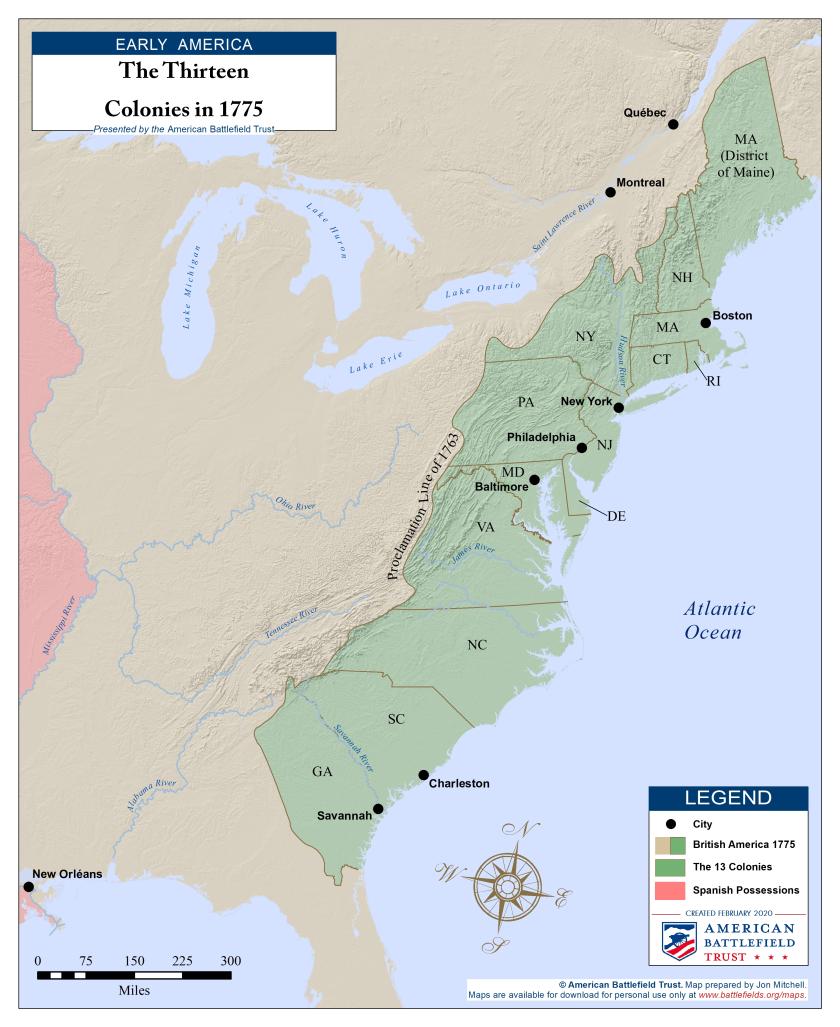
What were the populations of the two sides?
Great Britain had 8 million residents in 1775, and the 13 colonies about 2.5 million (of which half a million were slaves).
The largest cities in the colonies were Philadelphia, Pa, (43,000), New York, N.Y. (25,000), Boston, MA (16,000), Charleston, S.C. (12,000), and Newport, R.I. (11,000)
The four largest American colonies were Virginia (447,016), Pennsylvania (240,057), Massachusetts (235,308), and Maryland (202,599).
Where were the battles fought?
The majority of the war was fought in New York, New Jersey, and South Carolina, with more than 200 separate skirmishes and battles occurring in each of these three colonies. However, engagements were fought in every one of the original thirteen colonies, with additional military actions taking place in the modern-day states of Tennessee, Arkansas, Indiana, Illinois, Kentucky, Alabama, and Florida.
How much territory did the British control during the war?
Though difficult to quantify with numbers and acreage, there can be little doubt that the British forces occupied geographically and geopolitically important areas throughout the course of the war. They held several important Canadian forts and cities in Nova Scotia, Ontario, New Brunswick; remaining in control of these areas even following the American Revolution.
The British also controlled many key cities within the American colonies, with New York serving as its major base of operations for the duration of the war. They also temporarily possessed the cities of Boston and Philadelphia and held Savannah and Charleston until 1782.
While the British held several key urban centers, it’s important to understand that 90% of the colonial population lived in the rural countryside outside of British control and influence. So, in essence, the British were only able to maintain power in areas with a strong military presence, i.e. the colonial cities.
What are the major battles of the Revolutionary War?
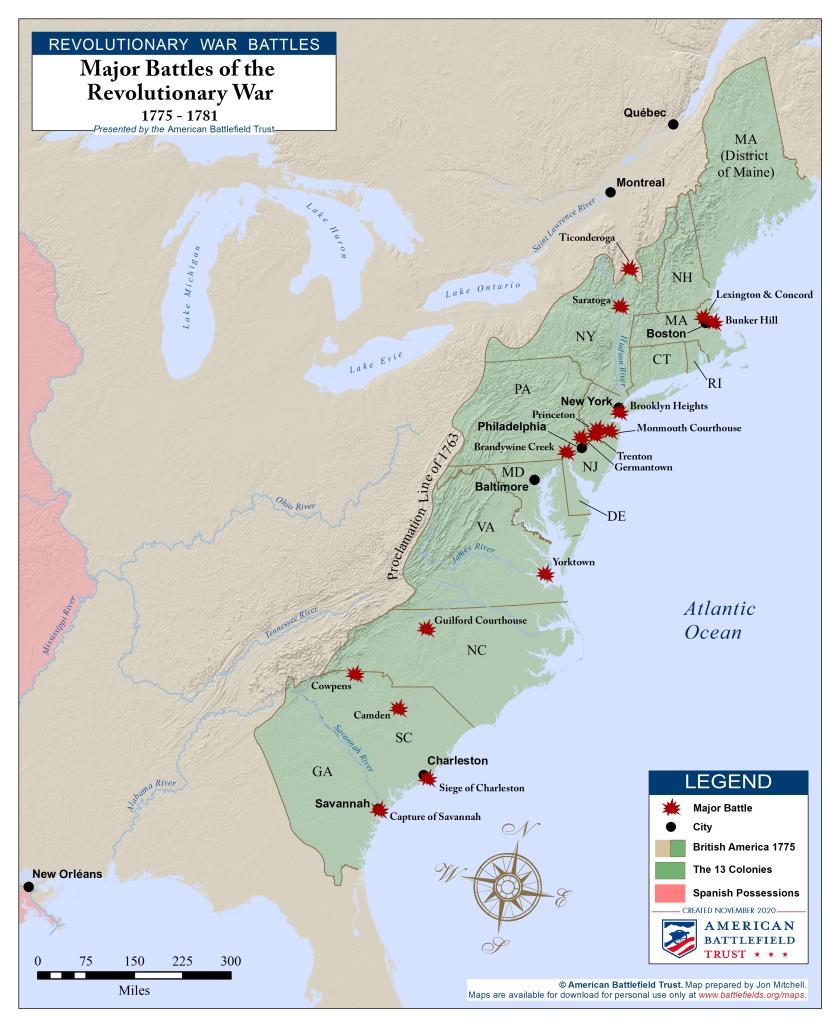
- April 19, 1775 — The Battles of Lexington and Concord, Ma.
- May 10, 1775 — The Siege of Fort Ticonderoga, N.Y.
- June 6, 1775 — The Battle of Bunker (Breed’s) Hill, Ma.
- August 27, 1776 — The Battle of Brooklyn, N.Y.
- December 26, 1776 — The Battle of Trenton, N.J.
- January 3, 1777 — The Battle of Princeton, N.J.
- September 11, 1777 — The Battle of Brandywine, Pa.
- October 4, 1777 — The Battle of Germantown, Pa.
- October 7, 1777 — The Battle of Saratoga, N.Y.
- June 28, 1778 — The Battle of Monmouth, N.J.
- December 29, 1778 — The Capture of Savannah, Ga.
- March 29, 1780 — The Siege of Charleston, S.C.
- August 16, 1780 — The Battle of Camden, S.C.
- January 17, 1781 — The Battle of Cowpens, S.C.
- March 15, 1781 — The Battle of Guilford Courthouse, N.C.
- October 10, 1781 — The Battle of Yorktown, Va.
What were the largest battles?
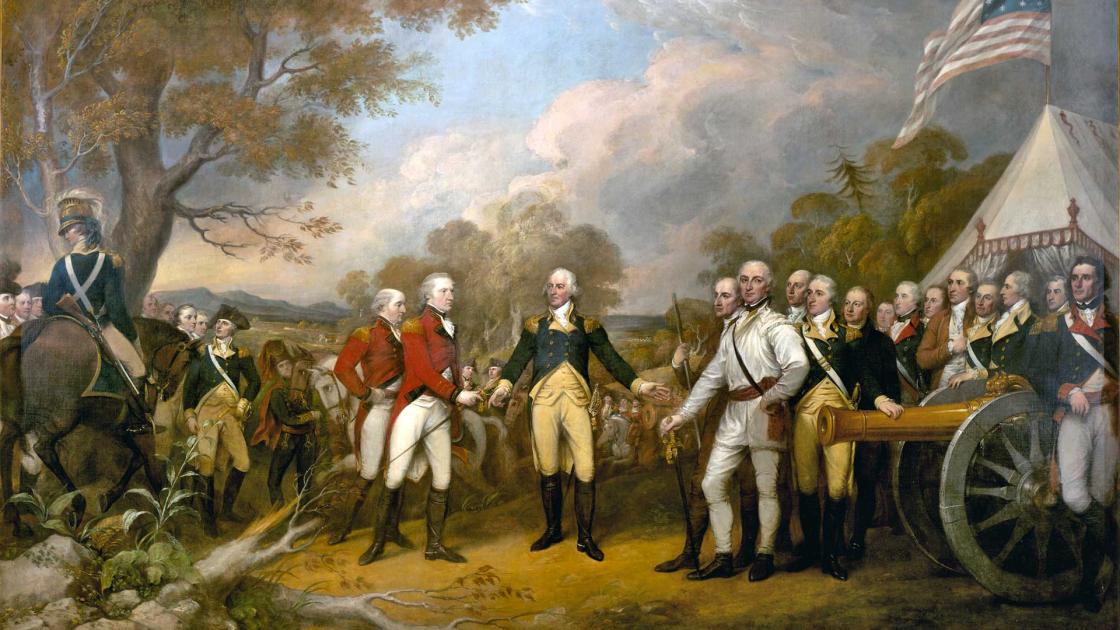
In terms of numbers: 40,000 soldiers fought in the Battle of Long Island, making it the largest battle. 30,000 men fought at Brandywine, Pa., and 27,000 participated at Yorktown, Va.
In terms of casualties, at Long Island the Americans lost 2,200 men, the British and Hessians about 350. Brandywine produced 1,500 American and 587 British and Hessian casualties.
Some engagements involved large numbers of prisoners, such as Yorktown, in which the British surrendered over 8,000 soldiers. In Charleston, S.C., the British captured 5,000 continentals, but similarly suffered a major setback when 6,200 British soldiers under General John Burgoyne surrendered at Saratoga, N.Y.
Other battles had the highest percentages of men lost. At Cowpens, S.C. and nearby Kings Mountain, S.C., the British lost roughly 90 percent of their armies. In both of these battles most of the losses were prisoners.
The crushing defeat of the Continental Army at the battle of Camden, S.C. stands out as the most costly battle of the war. Approximately 1,050 continental troops were killed and wounded, while the British suffered 314 casualties.
Were there any sieges in the war?
Yes, there were actually many sieges of cities, towns, and forts throughout the course of the war. The list below represents a sampling of the major sieges.
American aggressor:
Vincennes (In.), Ninety Six (S.C.), Yorktown (Va.), Boston (Ma.) and Quebec (Canada)
British aggressor:
Savannah (Ga.), Newport (R.I.)
Were there any battles overseas?
There was, perhaps surprisingly, a substantial amount of fighting which occurred far from the North American soil. On March 3, 1776, the Continental Navy captured New Providence Island, in the Bahamas. American warships and privateers also raided British merchants and warships throughout the Atlantic, and even fought naval battles around the British Isles.
Furthermore, thanks to the military alliance formed with France in 1778, and later joined by both Spain and the United Netherlands, land and sea battles were fought against Great Britain in the Caribbean, Europe, and as far away as India. The opening of this global conflict was vital to the colonists in North America. The British were forced to divert important resources and manpower away from the colonies, giving the Continental Army a fighting chance against them in their war for independence.
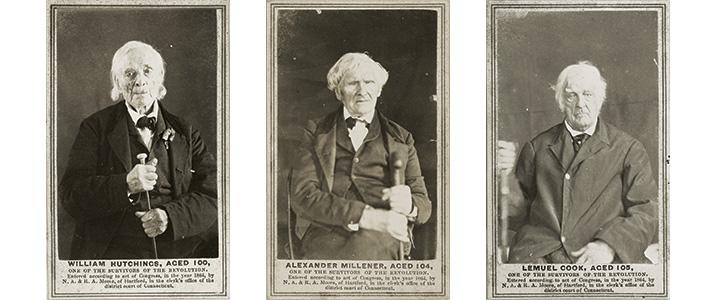
How many soldiers served in the war?
Over the course of the war, about 231,000 men served in the Continental Army, though never more than 48,000 at any one time, and never more than 13,000 at any one place. The sum of the Colonial militias numbered upwards of 145,000 men. France also dispatched a substantial force to North America beginning in 1779, with more than 12,000 soldiers and a substantial fleet joining the Colonial Americans by wars end.
At its peak, the British Army had upwards of 22,000 men at its disposal in North America to combat the rebellion. An additional 25,000 Loyalists, faithful to Great Britain, participated in the conflict as well. Nearly 30,000 German auxiliaries, or Hessians, were hired out by German princes and served alongside the British for the duration of the war.
How many were killed or wounded?
Throughout the course of the war, an estimated 6,800 Americans were killed in action, 6,100 wounded, and upwards of 20,000 were taken prisoner. Historians believe that at least an additional 17,000 deaths were the result of disease, including about 8,000–12,000 who died while prisoners of war.
Unreliable imperial data places the total casualties for British regulars fighting in the Revolutionary War around 24,000 men. This total number includes battlefield deaths and injuries, deaths from disease, men taken prisoner, and those who remained missing.
Approximately 1,200 Hessian soldiers were killed, 6,354 died of disease, and another 5,500 deserted and settled in America afterward.
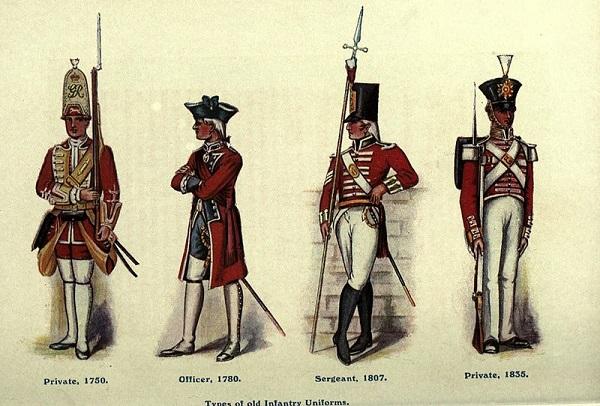
What other nationalities were involved?
The American Revolution was a truly global conflict, with battles being fought in North America, the Caribbean, and Europe. The British were aided by both loyal Native American tribes, and Hessian troops from various German principalities. The American patriots were aided by an even larger coalition of European Powers which included France, Spain, the United Netherlands, and officers of various European nations. Of particular note were the contributions of men such as the Marquis de Lafayette, Baron von Steuben, Casimir Pulaski, Rochambeau, and Tadeusz Kościuszko.
Who were the Hessians?
Because it was cheaper to hire auxiliary soldiers than muster their own, the British government hired professional German troops called Hessians. Hired out for service by their princes or nobles, more than 30,000 Hessian soldiers sailed for North America and fought on the side of the British. Though they wore their traditional uniforms, flew their own flags, and retained their officers, British generals ultimately commanded the individual Hessian units. Johan Rall and Wilhelm von Knyphausen
What role did African Americans and Native Americans play?
Early in the war, many free blacks volunteered for service with the Continental Army, but were rejected. Americans harbored long-standing fears of slave insurrection. Later in the war, when voluntary enlistments were low, various states offered freedom to slaves who fought. About 7,000 African Americans served on the Continental side.
From the start, the British courted slaves by offering them freedom, although it was never an official government policy, but rather done by local commanders on their own. About 20,000 African Americans served with the British, knowing their status might not change if Americans won.
In 1763, the British issued a proclamation banning American colonists from moving westward onto Native American lands. For this reason, coupled with several other economic and political factors, many Native Americans, including 4 of the 6 tribes of the powerful Iroquois Confederacy, sided with the British at the outbreak of the war. Joseph Brant, whose Mohawk name was Thayendanegea, served alongside British soldiers along with troops he led. Yet some several tribes sided with Colonials, including the two remaining tribes of the Iroquois Confederacy, the Oneidas and the Tuscaroras. In places like upstate New York, western Pennsylvania, and the Carolina frontier, warfare was particularly brutal and involved many Indian groups.
The fate of many Native American tribes following the American Revolution was a tragic one. Members of the Iroquois Confederacy, along with many other Native Americans, were ravaged by the conflict, weakened significantly due to infighting, disease, and were completely left out of the Treaty of Paris signed in 1783. Treaties made with the British prior to the war were ignored by the Americans, and years of bloody conflict and expansion all but destroyed the Eastern Tribes.
How were the armies organized?
The infantry regiment was the single most distinguishable unit throughout the course of the Revolutionary War. While brigades and divisions were used to group units into a larger cohesive army, regiments were far and away the primary fighting force of the Revolutionary War.
During the 18th century, the British had one of the most disciplined and well-trained armies in the entire world. A British regiment of the Line consisted of exactly 811 men at the time of the unit’s formation. It was led by a Colonel, and was staffed by 40 junior officers, 72 non-commissioned officers, 24 drummers, 2 fifers, and fielded by 672 privates.
Each regiment was broken into 10 companies, eight of which were regular "center" companies, while the remaining two were "flank" companies: grenadier and light infantry. The light infantry and grenadier units were almost always placed at a regiment’s flanks during battle, and would often function independently throughout the course of a battle.
Washington organized his 27,000 man army based upon British doctrine and precedents; therefore, his army was divided into 6 combat brigades consisting of about 2,400 men. Each brigade was comprised of about 5 or 6 regiments, with each regiment averaging around 470 men fit for service.
A regiment was broken down further into 1 or 2 battalions which were then broken down into companies. Companies were comprised of 40 privates, 3 corporals, 1 ensign (2nd Lieutenant), 1 Lieutenant, and a Captain.
It should be noted that for both the British and Continental Army, the size of a brigade, division, and army could vary greatly at any given time according to losses, detachments, etc.
What did the armies wear?
For the better part of three centuries, the British army was personified by its bright red uniforms and bleached white breeches. Though specific units bore alternative trim colors ranging from green, yellow, black, and white, the vast majority of infantrymen were clad in the distinctive red coats, white breeches, gaiters, and black tricorn or fur hat. Grenadier, and light infantry units wore modified versions of the standard British uniform, with the Cavalry usually wearing green coats.
The American patriots, whether serving in the regular army or with colonial militias, wore a virtual hodgepodge of uniforms prior to standardization. Beginning the war donning brown uniforms, George Washington then settled on navy blue jackets accompanied with white breeches, and tricorn hats for his army. Additionally, regiments from different regions possessed uniforms with either blue, white, red, or buff facings and trim.
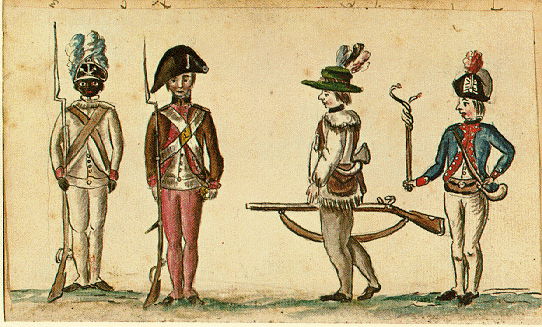
What were a soldier’s rations?
Under normal circumstances, the Continental soldiers were supposed to receive the following daily ration:
- 1 ½ pounds of flour or bread
- 1 pound of beef or fish OR ¾ pounds of pork
- 1 gill of whiskey
- The British were also to receive a similar daily ration under normal circumstances:
- 1 ½ Pounds flour or Bread
- 1 pound of beef or a ½ pound of pork
- ¼ pint of canned Peas or 1 ounce of rice
- 1 ounce of butter
- 1 ½ gills of Rum
Rations could be highly irregular in terms of their size and composition for both armies and often depended upon the weather, road conditions, and the season.
What tactics defined combat in the Revolutionary War?
Under normal circumstances, 18th century combat entailed that two armies march toward one another, shoulder to shoulder, and usually in ranks of about three men deep. When the opposing sides were within range, orders were given to halt, present arms, to fire, and then to reload.
After several volleys, one side gained the upper hand, and they would begin to close the distance with the enemy, bayonets lowered. This typically culminated in a full out charge at close quarters; sabers, bayonets, and rifle butts were used to sweep the enemy from the field and claim victory.
Though the tactics utilized during the Revolutionary War may seem rather archaic today, the unreliability of the smoothbore muskets, usually only accurate out to about 50 yards or so, necessitated close range and proximity to the enemy. As a result, discipline and shock were the hallmarks of this style of combat, with concentrated fire and bayonet charges deciding the outcome of a battle.
Was Valley Forge a turning point?
Though shrouded in myth, Valley Forge was indeed a turning point of sorts for the Continental Army under Washington. Though the winter of 1777-78 at Valley Forge was nowhere near as severe as the one soldiers suffered through in Morristown, N.J. in 1780, the Valley Forge men nevertheless suffered harsh conditions and periodic food shortages. Despite their agony, the men at Valley Forge were transformed from a rag-tag group of undisciplined and largely ineffective soldiers to a trained and orderly army, capable of winning victories over the British.
The rapid improvement seen at Valley Forge can be largely credited to the Prussian officer turned American patriot, Baron von Steuben. Steuben’s efforts not only improved training, but standardized the drill manual used by American troops and gave them a sense of pride and honor. By the spring, confidence and morale had improved dramatically and Washington led a superior army out of Valley Forge ready to face the British anew.
What role did navies play?
When the Revolution started, the Royal Navy had 270 ships at its disposal. That number swelled to 478 by the conflict’s end. The Royal Navy gave the British the immense advantage of being able to move and supply troops at will almost anywhere in North America and the world.
The Continental Navy started out small in 1775 with only a handful of ships patrolling the waters of the North American shoreline. However, thanks to ships on loan from France and new vessels constructed in the colonies, the Continental Navy peaked in numbers in 1777 with 31 vessels to its name. Though the Continental Navy could hardly defeat the mighty British Navy outright, they interrupted British commerce on the high seas, won victories against superior ships, and even made successful raids around the British Isles. Men like John Paul Jones helped shape the US Navy.
Supplementing the Continental Navy was a fleet of privately owned and operated vessels officered by men known as “Privateers.” Privateers held contracts passed on by the Continental Congress and were instructed to wreak havoc on British warships and shipping wherever they could. Privateers were the most successful American warships of the war, capturing more than 300 British vessels.
What kind of artillery was used?
Common types of field artillery were 3, 6, and 18-pounder guns, named for the weight of shot that the guns fired. Larger cannons and mortars – which lobbed large-caliber projectiles in high arcs onto their targets – were often used in sieges given their destructive capabilities. Howitzers, with shorter barrels and larger calibers compared to cannons, were also utilized by both sides.
While both the British and the American forces fielded a plethora of cannons, howitzers, and mortars, they largely played a supporting role on the battlefield, and rarely carried the same amount of destructive power as artillery of the Civil War era.
What role did cavalry play?
The use of cavalry varied by region, but, on the whole, cavalry forces were small and used for scouting, hit and run raids, or to support units in battle. Cavalrymen carried an array of weapons, including several pistols, a saber, and a carbine musket. Unique to the cavalry, troopers often wore leather helmets and modified uniforms conducive to mounted warfare.
Both sides also used Legions, which consisted of infantry and cavalry combined into a single unit. Legions could move quickly and were quite versatile. Examples include the American Henry “Light Horse Harry” Lee’s Legion and “Tarleton’s Raiders” under the command of the British Lieutenant Colonel Banastre Tarleton.
What role did spies play?
Spies were used extensively by both sides throughout the course of the war. Men and women risked their lives to gather intelligence and pass information. Nathan Hale, captured and hanged by the British, is one of the most famous American spies. British officer John Andre worked with Benedict Arnold and was caught by the Americans and hanged. James Armistead Lafayette is the most well-known African American slave playing the role of a runaway slave to gain access to General Cornwallis’s headquarters. As a result, Armistead accomplished what few spies could: direct access to the center of the British War Department. Many women worked as spies, using their freedom of movement to gather information and pass through the lines. They include Ann Bates of Philadelphia and Emily Geiger of South Carolina, and Lydia Barrington Darragh.
Where can I learn more?
We recommend the following books as a great place to get started:
- Almost a Miracle: The American Victory in the War for Independence by John Ferling
- The Men Who Lost America: British Leadership, the American Revolution, and the Fate of An Empire by Andrew Jackson O’Shaughnessy
- The Road to Guilford Courthouse: The American Revolution in the Carolinas by John Buchanan
- The Road to Charleston: Nathanael Greene and the American Revolution by John Buchanan
- Guns of Independence: The Siege of Yorktown by Jerome Greene
What is the preservation status of the Revolutionary War’s battlefields and sites?
While some of the larger battle sites and camp sites are preserved as either national or state parks, a surprising number are not, or are only partially preserved. There is still great potential to save key areas at many engagement sites.
Learn how to Take Action to save Revolutionary War battlefields and ways to get involved.
